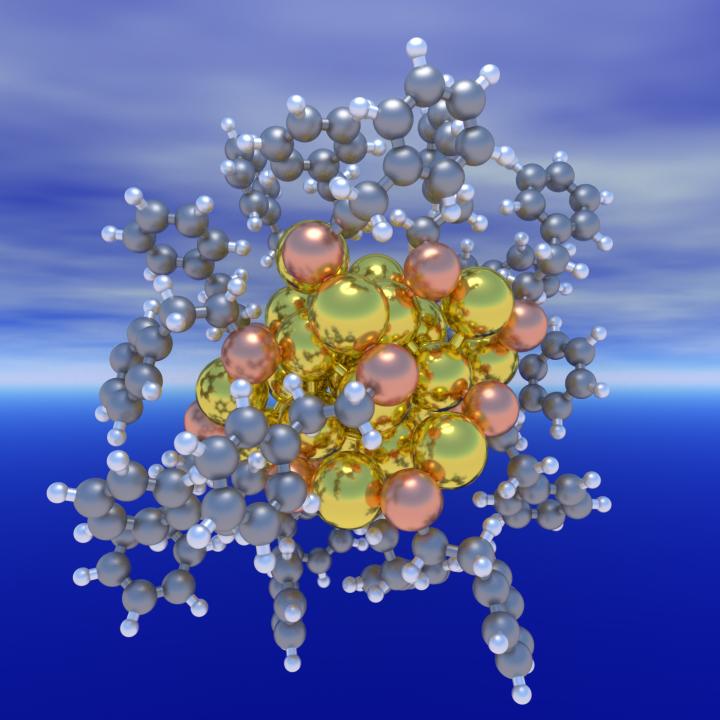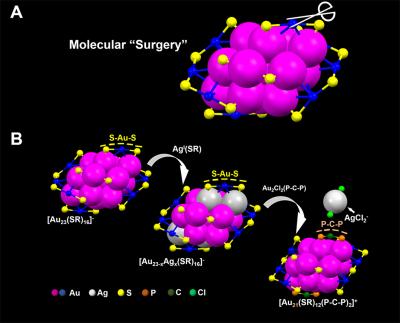University of Pittsburgh scientists have researched why metal nanoparticles form, a necessary first step before developing techniques for synthesizing them commercially. From a July 10, 2017 news item on ScienceDaily,
Although scientists have for decades been able to synthesize nanoparticles in the lab, the process is mostly trial and error, and how the formation actually takes place is obscure. A new study explains how metal nanoparticles form.

Caption: This is a structure of a ligand-protected Au25 nanocluster. Credit: Computer-Aided Nano and Energy Lab (C.A.N.E.LA.)
A July 10, 2017 University of Pittsburgh news release (also on EurekAlert), which originated the news item, expands on the theme (Note: A link has been removed),
“Even though there is extensive research into metal nanoparticle synthesis, there really isn’t a rational explanation why a nanoparticle is formed,” Dr. Mpourmpakis [Giannis Mpourmpakis, assistant professor of chemical and petroleum engineering] said. “We wanted to investigate not just the catalytic applications of nanoparticles, but to make a step further and understand nanoparticle stability and formation. This new thermodynamic stability theory explains why ligand-protected metal nanoclusters are stabilized at specific sizes.”
A ligand is a molecule that binds to metal atoms to form metal cores that are stabilized by a shell of ligands, and so understanding how they contribute to nanoparticle stabilization is essential to any process of nanoparticle application. Dr. Mpourmpakis explained that previous theories describing why nanoclusters stabilized at specific sizes were based on empirical electron counting rules – the number of electrons that form a closed shell electronic structure, but show limitations since there have been metal nanoclusters experimentally synthesized that do not necessarily follow these rules.
“The novelty of our contribution is that we revealed that for experimentally synthesizable nanoclusters there has to be a fine balance between the average bond strength of the nanocluster’s metal core, and the binding strength of the ligands to the metal core,” he said. “We could then relate this to the structural and compositional characteristic of the nanoclusters, like size, number of metal atoms, and number of ligands.
“Now that we have a more complete understanding of this stability, we can better tailor the nanoparticle morphologies and in turn properties, to applications from biolabeling of individual cells and targeted drug delivery to catalytic reactions, thereby creating more efficient and sustainable production processes.”
Here’s a link to and a citation for the paper,
Thermodynamic stability of ligand-protected metal nanoclusters by Michael G. Taylor & Giannis Mpourmpakis. Nature Communications 8, Article number: 15988 (2017) doi:10.1038/ncomms15988 Published online: 07 July 2017
This paper is open access.
